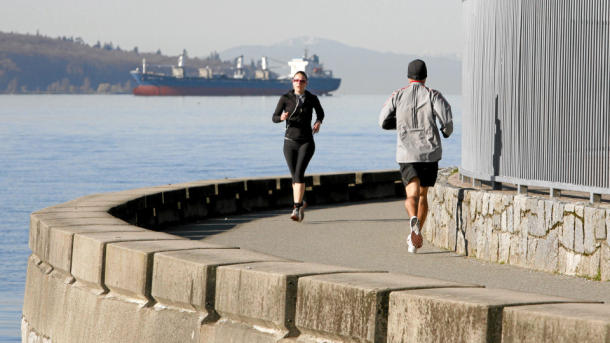Hamstring exercise is important for the development of the calves and also, of course, to avoid the well known injury known as becoming hamstrung. This is a strained or pulled hamstring, a painful injury which can put you out of action as an athlete or halt your workout problem at any moment if you allow the hamstrings to become weak.
The hamstring is a tendon running down the back of the thigh from the buttock to the knee. Injuries to the hamstring usually result from overdeveloping the quad muscles, which can then pull a weak hamstring out of line. You will not normally injure the hamstring by working the hamstring itself, although in extreme cases it might be possible to over stretch a weak hamstring. All athletes must be sure to strengthen the hamstrings to avoid injury.
Stretching the hamstrings can also be important in preventing or reducing lower back pain. This may not sound logical but it happens because tight hamstrings will pull the back of the pelvis down, which in turn pulls the spine out of its normal curved alignment. This is more likely to apply to people who sit a lot than to people who are active, but if you have a job where you sit down most of the day then it is especially important to include hamstring stretches in your workout to avoid back problems. Consult with a doctor before starting any exercise program.
The best time to do hamstring exercises and stretches is after the body is warmed up, when there is plenty of blood coursing through the muscles.
Hamstring Stretch
Lie on your back and raise one leg in the air with the thigh at right angles to the floor, knee bent. The other leg is bent with the foot flat on the floor. Straighten the raised leg as much as you can.
In a flexible person with a fully stretched hamstring the leg will be straight and the foot at right angles to it, sole of the foot facing the ceiling. But depending on your muscularity this may never be possible, and it is usually easier for women than for men. Don’t worry if it is not possible for you, just go to where you feel a good stretch in the hamstring. You can support the thigh with hands or a towel.
Stretch slowly with full awareness on the hamstring, and hold each stretch for 10-20 seconds. 5 reps each side is enough.
Hamstring Strengthening
The exercise most commonly used for strengthening the hamstring in isolation is the leg curl. The first two types of leg curl require a machine. Most gyms will have one machine or the other.
1. Standing Leg Curl
Face the machine with the padded roller behind you to one side. Curl the leg up backwards, lifting the padded roller with your heel. Repeat, then switch to the other side.
2. Lying Leg Curl
Lying on your stomach on the bench, you curl both legs up backwards, lifting the padded roller with your heels.
3. Standing Free Leg Curl
This exercise is suitable for people who are out of condition, seniors etc with weak musculature but there is no resistance so it will not strengthen the hamstrings enough for an athlete.
Stand with your hands supported on a tall straight backed chair or high counter. The back must not be bent. Keeping the knees in line, raise one foot off the floor, bringing the foot up and back toward the thigh. Hold for a count of 5. Repeat 5 times then change legs.
4. Deadlift
Lift barbell from the floor to thigh height (arms extended down). Start with bent knees and keep a neutral spine. Lower it back down slowly, again bending the knees. Done this way, most of the lifting is felt in the legs, giving hamstring exercise and strengthening at the same time as developing the quad muscles.



